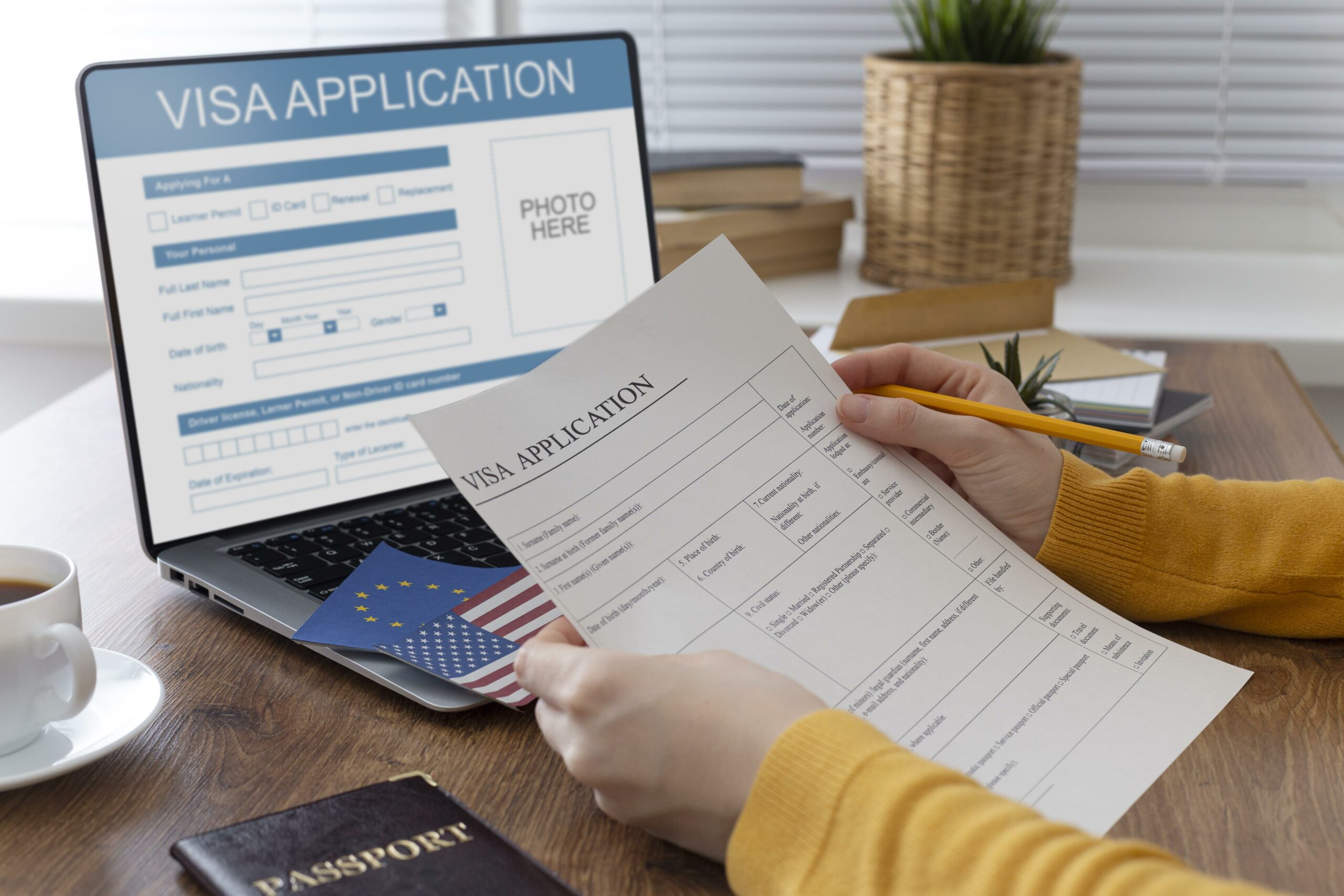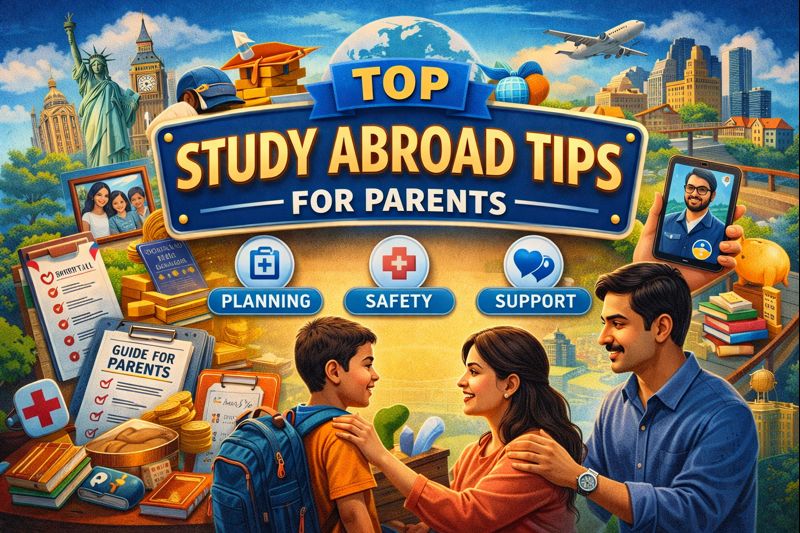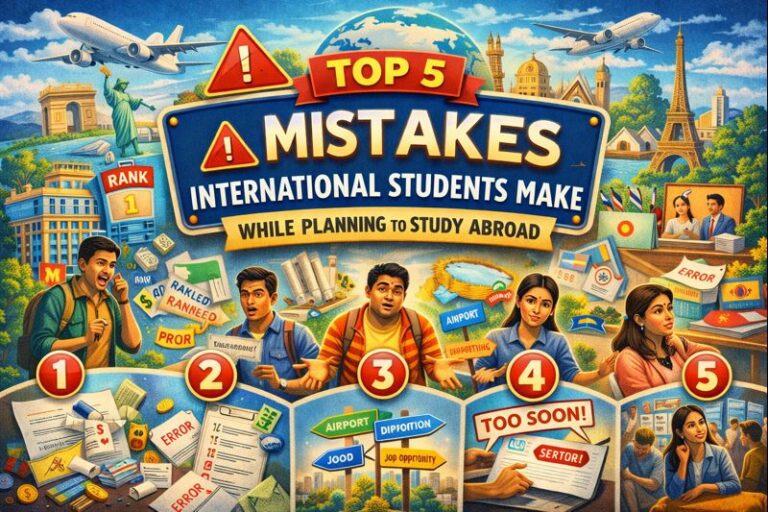If not, that sums up the international student visa process for you.
Imagine if you make one tiny mistake after all that hard work and now you have to go through the entire process again.
Good thing you just have to imagine it and not go through it, because the internet has landed you on the right page.
Read this full piece and get details on everything about proof of funds for the international student visa process.
How Much Bank Balance Is Required For A Student Visa?
Do I need to show proof of financial resources for a student visa? This is a question we face often.
Yes, before your trip to the USA, you must show proof of financial resources for a student visa.
When you apply for an F-1 or M-1 visa, you have to show you can support yourself and have enough funds to cover your tuition and living expenses. This also includes the expenses of your spouse and children, if they are accompanying you.
Student visas for the USA do not allow you to rely on any opportunities for employment in the country to meet your expenses. You can take up on-campus work for 20 hours per week while school is in session.
For F-1 student visas, your financial resources must cover at least a 12-month academic term.
Besides, you must provide evidence of future funding for subsequent years of study. There is no need to show immediately available funds for the entire course period. However, the visa officials expect a viable plan for covering future costs.
M-1 visas for vocational students require the applicant to show funds to cover the entire 12-month study term.
Also Read: Study Abroad Guide for Indian Students 2024
What Qualifies as Proof of Funds for Student Visa Process?
Every country has different requirements for international students of different nationalities. There is no standard list that applies to every country.
So, we have curated a list of documents for you that are more or less common for the visa process in all countries.
Check out: 15 Study Abroad Visa Documents You Must Prepare Right Away
Bank Statements
You will have to provide your bank account statements for the past set period of time. For instance, for Canada Study Permit, you need to submit your bank statements for the past four months.
For the US Study Visa, on the other hand, you will have to submit your bank statements for the past three years.
Other than the set duration, here are some things that you must get clarity on as these are country-specific formats.
- Some countries specifically require the saving account statements of the student, whereas some require statements of the person supporting the student.
- Usually, the Current Account Statements are not accepted. So, you have to confirm whether your destination country requires your SavingsSaving or Current Account Statements.
- The scanned copy of your statements should be duly signed and stamped by your bank. It shouldn’t be an e-mail attachment or a digital copy produced through Net-banking.
Scholarship Letters
- If you have availed a scholarship, this document is a must for you.
- You can use your scholarship letters to prove your financial capacity.
- Whether it’s a scholarship provided by an institute/ university or a government grant, you will have to attach a copy of the official document with your Visa application
Sponsorship/ Affidavit of Financial Support
This particular document is not strictly a proof of funds. However, if your program is being sponsored by someone, you can produce an Affidavit of Support to validate your financial capacity.
Some universities in the US and Australia as for this document along with other financial documents.
This is basically a notarized document proclaiming that another person will be sponsoring your education along with the living expenses. While providing this document, keep a few things in mind:
- You may have to attach the Proof of Income/ Bank Letters of the sponsor along with this document.
- Often, direct blood relatives are required to provide this affidavit. Your parents, spouse, grandparents, maternal and paternal aunts, and uncles can provide this, but a distant relative can’t.
- If your aunt or uncle is providing the document, the affidavit has to clarify the reason behind their sponsorship along with claims of sufficient funds.
Loan Approval Letter
If you have taken a loan, you can easily collect a Loan Approval Letter from your bank and use it as proof of funds.
But before you submit the document, keep in mind that:
- It must be duly signed and stamped by the bank.
- It must clearly specify the loan amount along with your name.
- Must have a specified date of amount disbursement.
- Must mention that the loan has been fully sanctioned after meeting all the terms & conditions.
Bank Letters
- These are the documents that are provided by your bank mentioning important information like the nature of your account, balance, etc.
- All these letters must be duly signed and stamped by the bank.
- To reflect the account balance, the document must also clarify its conversion in the currency of the country of your choice along with the conversion rate. (For eg. Account Balance = ₹ 12,00,000, equivalent to US $ 25,875.02 at a conversion rate of US $ 1 = ₹ 77.29.
- Bank letters reflect Fixed Deposits (FDs) helped by sponsors as well. Certain countries do not accept FD amounts. So, you will have to check with the official authorities on that.
Property Evaluation Report
- If you are looking to study in New Zealand and Australia, you might have to produce this document.
- You will need to submit this document if you have taken a student loan against your property.
- A competent authority like a financial institution or your bank prepares this comprehensive report.
- For this report, you will need details like images of the property, size, specifications, and ownership documents.
Loan Capability Certificate
- This is not a Loan Approval Letter, however, somewhat similar. Many universities in the US ask for this certificate to issue Form I-20.
- As the name suggests, this document is provided by the bank proving that you are capable of getting a loan for your education.
- The certificate must include information like your name, loan eligibility amount, etc.
- Just like every other bank-issued document, this one should also be duly signed and stamped.
- Other than these documents, you can also provide an EPF or GPF statement confirming withdrawal availability, a CA Certificate, etc.
Also Read: New F1 Visa Rules for USA: All You Need To Know
Tips For Preparing For A Student Visa For The USA
For a smooth student visa application, especially the F-1 visa, here is an outline of the steps you must follow:
1. Start Early and Stay Informed
Begin your visa application process as soon as you receive your acceptance letter from a college or university in the USA. Regularly check the official embassy or consulate website for the latest visa rules and requirements and make sure you have accurate information.
2. Organise Your Documents
You need to have all necessary documents organised and ready for your visa interview. Key documents you need to present at the interview include:
- Form I-20
- DS-160 form
- Visa fee receipts
- Passport
- Proof of financial resources for a study visa
- Academic records
- Prepare For The Visa Interview
The visa interview is a crucial part of the application process. In this interview, you will be asked questions about your choice of university, study plans, and career goals. Answer all questions truthfully and be sincere about your intentions to study in the USA and return to your home country afterward.
3. Show Financial Stability
During the interview, you will have to offer proof of financial resources for a study visa. Present clear and well organized financial documentation. These may include bank statements and proof of education loan and scholarships, that show your ability to support yourself while studying.
4. Be Prepared For Follow-Up Questions
The consular officer may ask follow-up questions. Be prepared to disclose more about your plans, motivations, and background if asked. This helps officials understand your true intent to study and your ties to your home country.
By following these steps and preparing well, you can increase your chances of obtaining a student visa for the USA.
Also Read: Student Visa for USA for Indian Students in 2024 (Guide)
Recent Updates In Visa Regulations For The USA
Some recent changes have been made to the student visa policies for the USA. Here are the key points you should keep in mind:
- Beginning in February 2023, the US Department of State has allowed consular officers to issue F and M student visas up to 365 days before a student’s program starts. This is an increase from the previous limit of 120 days. However, students can enter only 30 days prior to the start of the program.
- In March 2023, the US State Department announced an increase in non-immigrant visa application fees. The fee for student visas went up from $160 to $185, from May 2023.
- Students must ensure that their I-901 SEVIS Fee payment is active. the school name on the Form I-20 must match the visa, and their financial information has to be kept up-to-date in the SEVIS system.
Navigating these changes can be challenging, but your journey begins well before the visa process—choosing the right university is the first critical step.
Also Read: Your guide to the US student visa
Find Your Perfect University with SelectRight
Before you apply for a student visa, you have to gain admission to a university in the USA. The United States offers a plethora of options with postgraduate courses in science, engineering, technology law, medicine, management, and more. It can be difficult to make the best choice.
SelectRight transforms the university selection process into one driven by reliable data analytics instead of mere opinions. SelectRight uses an AI-enabled algorithm to generate a curated list of programs and universities, based on your profile.
Here is how SelectRight works:
- Sign up for free and provide details about your academic background, career goals, and more.
- Our algorithm analyzes 8 million data points to match you with universities and programs that are perfect for you.
- You evaluate shortlisted programs based on factors like location, tuition, curriculum, and employment opportunities.
- Seek advice from our unbiased experts and make informed decisions.
- Network with alumni, faculty, and peers to build relationships before even setting foot on campus.
Once you have shortlisted some high-ROI universities, the next big milestone is to find the right education loan. For this, FundRight can help.
Here’s how FundRight can help you secure the best education loan once you’ve selected your university:
- Create a profile on FundRight by providing your academic details, chosen university, and financial needs.
- Receive competitive loan offers from over 15 top lenders, including banks and NBFCs, who will bid to offer you the most favorable loan terms.
- Compare the loan options all in one place, allowing you to see which lender offers the best interest rates, repayment terms, and overall value.
- Consult with a financial expert from FundRight, who will guide you through the loan selection process, ensuring you choose the best possible option.
- Secure your loan quickly and efficiently, with approval often taking just 10 days, so you can focus on your preparations to study in the USA.
If you’re aiming for Spring ’25 admissions, now is the best time to set up your profile on SelectRight and FundRight.















